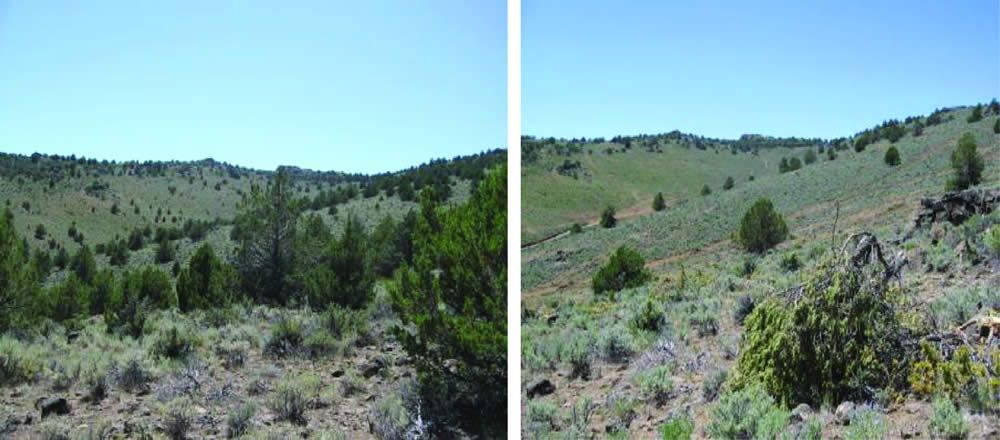California Biomass and Bioenergy
Biomass is “biologically–derived renewable material” such as plant residues used to produce energy. California is a leader in this emerging source of fuel. The State's 2011 update to its “Bioenergy Action Plan” estimates that biopower could produce 2,000 to 5,000 megawatts of localized renewable energy capacity by 2020.
BLM lands hold tremendous potential for this use. Currently, public lands produce 30,000 tons of biomass. Opportunities are being identified throughout the State to use this resource to produce energy.
Featured Project
“If you build it, they will come,” a famous movie line, could be the motto for a large-scale juniper reduction project in northeast California, as greater Sage-Grouse appear to be moving into the area and using part of it as a mating ground.
The Bureau of Land Management Eagle Lake Field Office has been working on the 10,162-acre North Horse project since 2008, removing junipers to reduce hazardous fuel loads and improve the condition of the sage-steppe ecosystem near Horse Lake. In addition to benefitting habitat, the project (and others like it in northeast California) has provided biomass fuel for a nearby power plant that provides over 30 megawatts of power to the California electric grid.

Recent sightings of sage-grouse in the treatment area are encouraging signs that recent treatments may be enhancing their habitat. There have been multiple sightings of up to 18 birds. Project managers were excited to discover a new sage grouse lek, or mating area, adjacent to the project site and in 2012 a biologist with the California Department of Fish and Wildlife confirmed birds were using the lek.
The ongoing project has racked up some impressive statistics. Crews have completed nearly 4,500 acres of mechanical treatment, 800 acres of hand thinning, and 350 acres of pile burning on BLM-managed lands bordering Horse Lake. An additional 3,000 acres will be treated in coming years depending on funding.
During the last two years the field office has partnered with the Natural Resource Conservation Service) and private land owners to expand existing treatment areas. These partnerships allow for leveraging funds from multiple sources and treatment in areas that would likely be left untreated. Approximately 1,200 acres of habitat improvement work has been accomplished to date on private lands with an additional 1,000 acres of additional work planned for upcoming years.
The vegetative response has been very good, especially considering dry conditions over the past few years. The field office ecologist has noted increases in grasses and forbs and improved vigor in existing sagebrush plants. Sagebrush seedlings and bunch grasses have become established in the bare areas where junipers were removed.

With a reduction in juniper density, and regrowth of native grasses, forbs, and shrubs, the field office wildlife biologist and botanist are confident that the treated units will continue to provide enhanced habitat suitable for sage-grouse and other sagebrush-obligate species, and that the treated lands will be able to more fully achieve their ecological potential.
Over time, the project area could serve as suitable nesting and brood-rearing habitat for sage-grouse, and provide cover and foraging opportunities for a variety of wildlife species.
